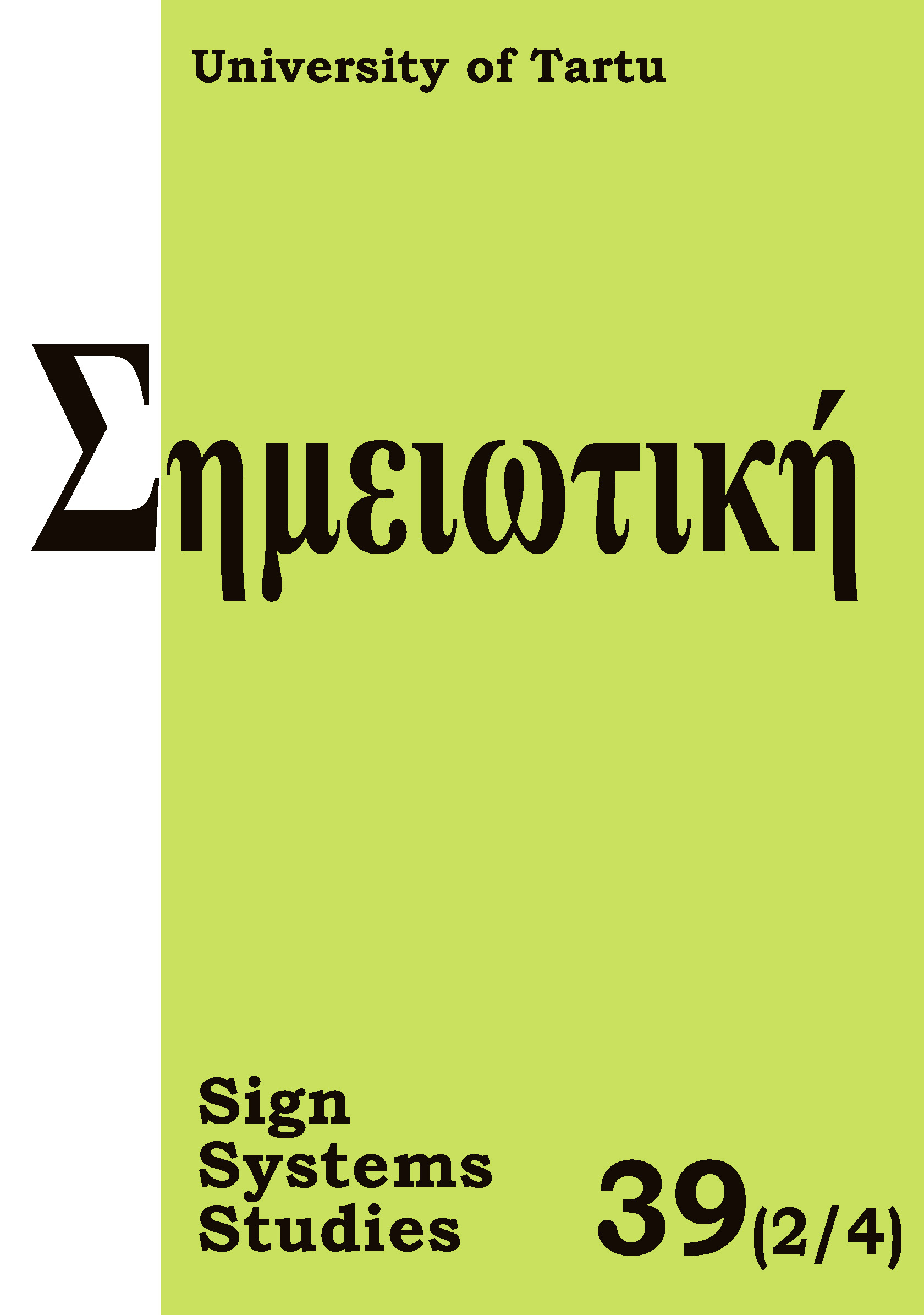Transdisciplinarity in objects: Spatial signification from graffiti to hegemony
DOI:
https://doi.org/10.12697/SSS.2011.39.2-4.05Abstract
Contemporary sociosemiotics is a way to transcend borderlines between trends inside semiotics, and also other disciplines. Whereas semiotics has been considered as an interdisciplinary field of research par excellence, sociosemiotics can point directions at transdisciplinary research. The present article will try to conjoin the structural and the processual views on culture and society, binding them together with the notion of signification. The signification of space will illustrate the dynamic between both cultures and metacultures, and cultural mainstreams and subcultures. This paper pays attention to the practice of sociocultural semiotisation of space and territorialisation by diverse examples and different sociocultural levels that imply semiotic cooperation between several members of groups that can be characterised as socii. We analyse territorialisation by graffiti, by furnishing spatial environment through artistic manners, by shaping the semiotic essence of cities through naming, renaming and translating street names, by pinning and structuring territories with monuments, by landmarking and mapping cultural space through individualisation of cities. We will see how principles of semiotisation of space are valid on different levels (individual and social, formal and informal, democratic and hegemonic, cultural and subcultural) and how these principles form a transdisciplinary object of study as ‘semiotisation of space’, and how space can be regarded as a genuinely transdisciplinary research object. Individual, culture, and society are connected in such an object both as constituents and as a background of study.Downloads
Download data is not yet available.
Downloads
Published
2011-12-01
How to Cite
Randviir, A. (2011). Transdisciplinarity in objects: Spatial signification from graffiti to hegemony. Sign Systems Studies, 39(2/4), 88–123. https://doi.org/10.12697/SSS.2011.39.2-4.05
Issue
Section
Articles


